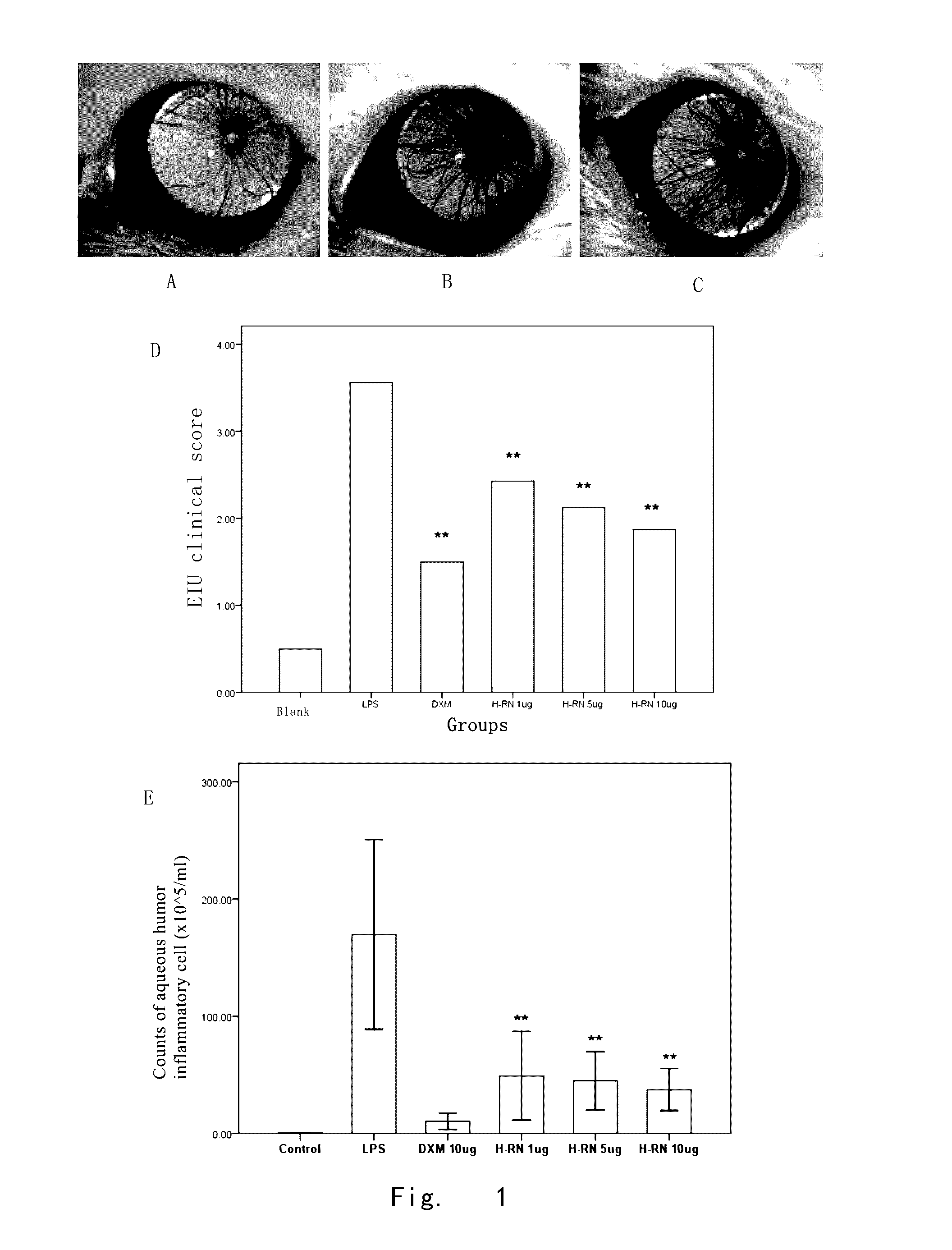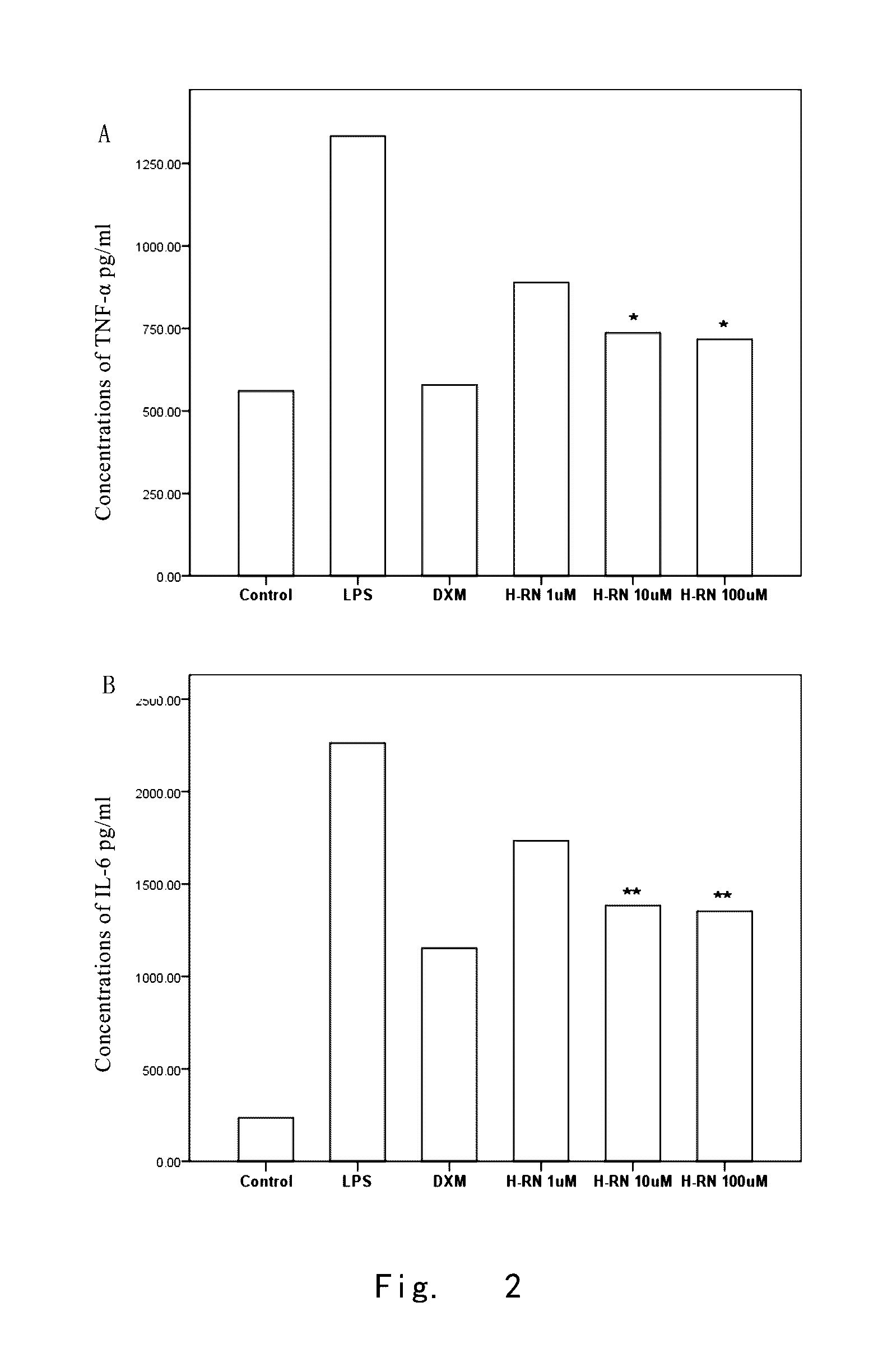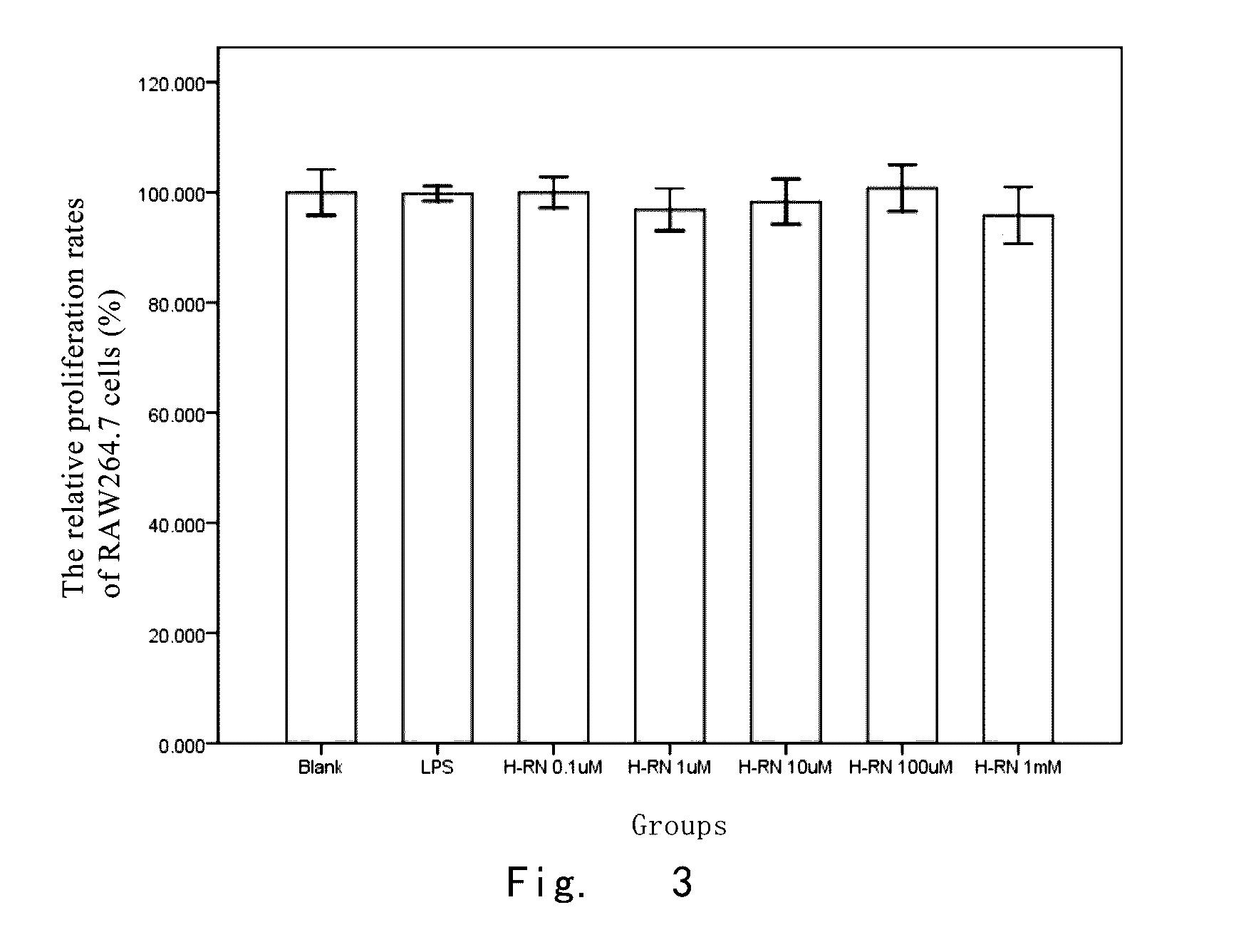Low molecular polypeptide for preventing and treating inflammation and use thereof
a polypeptide, low molecular technology, applied in the field of biopharmaceutical, can solve the problems of blood-ocular barrier, secondary glaucoma, macular edema, etc., and achieve the effect of inhibiting inflammation
- Summary
- Abstract
- Description
- Claims
- Application Information
AI Technical Summary
Benefits of technology
Problems solved by technology
Method used
Image
Examples
example 1
[0112]Synthesis of Polypeptide
[0113]H-RN polypeptide (SEQ ID NO: 2) was synthesized by using the commercially available SYMPHONY polypeptide synthesizer. The steps are listed as follows:
[0114]1. The desired protective solution for amino acids, condensation reagents, and cleavage reagents were calculated and prepared according to the software, and sufficient amount of DMF, DCM were added into the corresponding flasks in the synthesizer.
[0115]2. 100 μmol of FMOC-Ala-Wang-Resin was added into the reactor.
[0116]3. A 15 ml centrifuge tube was placed to the tunnel for collecting cleavage fluid.
[0117]4. The program was set as follows: typically, 30 mins for resin swelling, 5 mins and 15 mins for deprotection respectively, 30 mins for condensation, and 2 hrs for cleavage program.
[0118]5. The synthesis was conducted as programmed.
[0119]6. Finally, the cleavage fluid was precipitated by ether, centrifuged, blow-dried and purified by HPLC.
[0120]120 mg of polypeptide H-RN was obtained as white ...
example 2
[0121]Effects of H-RN on inflammatory cell infiltration of EIU model
[0122]1. Materials and methods:
[0123]1.1 Experiment animals and materials: healthy male Wistar rats, 140-180 g, 8-10 weeks old, were purchased from Animal Center of Chinese Academy of Medical Sciences; Lipopolysaccharides (LPS), derived from Escherichia coli, was purchased from SIGMA-Aldrich Corporation (U.S.A).
[0124]1.2 Model establishment and Intervention test: Wistar rats were randomly divided into six groups (9-15 rats for each group) which were LPS group, LPS+1 μg / μl H-RN intervention group, LPS+5 μg / μl H-RN group, LPS+10 μg / μl H-RN group, LPS+10 μg / μl DXM and normal control group (PBS) respectively. 200 μg LPS (2 mg / ml, 100 μl, dissolved in sterile saline) was subcutaneously injected into right foot pad of rats, thereby establishing EIU model. The normal control group was subcutaneously injected with 100 μl sterile saline into the right foot pad of rats. In LPS group, LPS+H-RN (1, 5, 10 μg / μl) intervention gro...
example 3
Effect of H-RN on LPS-Induced Proinflammatory cytokine in RAW264.7 Cells
[0134]1. Materials and Methods
[0135]1.1 Experimental cell strain and Materials: murine peritoneal macrophage cell strain RAW264.7 were purchased from the Cell Bank of Shanghai Institutes for Biological Sciences, CAS; DMEM high glucose medium was purchased from GIBCO; mouse tumor necrosis factor-α (TNF-α) and interleukin-6 (IL-6) enzyme-linked immunosorbent assay (ELISA) kits were purchased from R & D company, US.
[0136]1.2 Model establishment and Intervention test: RAW264.7 cells were cultured in high glucose DMEM medium containing 10% fetal bovine serum (FBS), and 100 U / ml double antibiotics of penicillin and streptomycin, and placed in 37° C., 5% CO2 incubator for amplification. Cells at Logarithmic growth phase were seeded in 24-well plates at 2.5×105 / ml. When adhered cells grew well and were cultured to 80-90% of confluence, the medium was replaced by a DMEM medium without 10% FBS for serum-starved culture fo...
PUM
| Property | Measurement | Unit |
|---|---|---|
| time | aaaaa | aaaaa |
| body weight | aaaaa | aaaaa |
| body weight | aaaaa | aaaaa |
Abstract
Description
Claims
Application Information
 Login to View More
Login to View More - R&D
- Intellectual Property
- Life Sciences
- Materials
- Tech Scout
- Unparalleled Data Quality
- Higher Quality Content
- 60% Fewer Hallucinations
Browse by: Latest US Patents, China's latest patents, Technical Efficacy Thesaurus, Application Domain, Technology Topic, Popular Technical Reports.
© 2025 PatSnap. All rights reserved.Legal|Privacy policy|Modern Slavery Act Transparency Statement|Sitemap|About US| Contact US: help@patsnap.com



